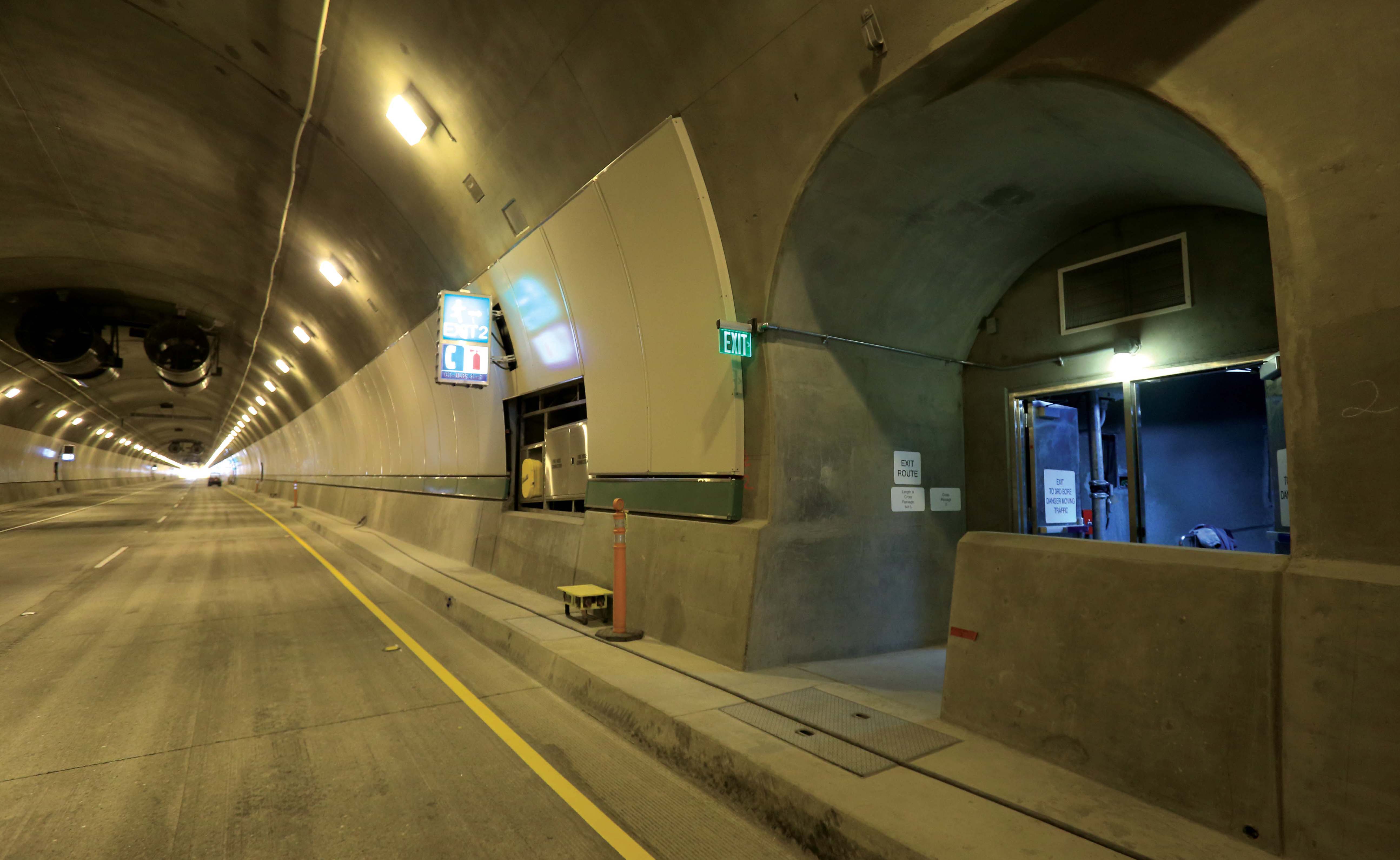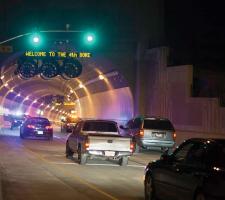
Caldecott Tunnel’s new Fourth Bore is utilising a bespoke high-capacity monitoring and communications network from Moxa.
The
By the beginning of this century congestion was regularly occurring in the off-peak direction between Contra Costa and Alameda County, with up to 160,000 vehicles passing through the tunnels each day. At weekends the centre bore has been known to swap directions six times in a day.
To counter this congestion a partnership was formed to add a fourth bore to the tunnel. The $417 million project involved drilling through more than 1km (3,348 feet) of rock to create a Fourth Bore adjacent to the existing three, enabling two bores to be permanently dedicated to each direction of traffic and eliminate the 50-year old practice of reversing the direction of traffic in the centre bore.
Caldecott Tunnel’s Fourth Bore is designated as a regional lifeline and is designed to reopen to emergency traffic within 72 hours of a major earthquake – complete with functioning monitoring and communications systems. There are variable message signs and tunnel radio to get information to drivers and, in the event of a major problem, stop traffic entering the tunnel.
Randell Iwasaki, executive director of the Contra Costa Transportation Authority said: “The tunnel traverses the Berkeley Hills and lies less than a mile away from the Hayward Fault. Although tunnels are relatively safe during an earthquake, the Caldecott Fourth Bore was designed to meet especially stringent seismic requirements. Its seismic design is based on the Safety Evaluation Earthquake on a 1,500-year return period along this fault, with peak ground acceleration of 1.2g.
“The Fourth Bore also features strong seismic motion detectors to monitor seismic activity.” He elaborated: “These detectors measure acceleration rates: longitudinal, transverse, and vertical. The data will be sent to the California Geological Survey and analysed to better understand earthquake energy attenuation."
In line with all current regulations and guidelines, the new 12.6m (41ft) bore was designed with two 3.6m (12ft) wide travel lanes, roadway shoulders and an emergency walkway. It has bright high-pressure sodium lighting and along the length of the tunnel are seven emergency exits through to the third bore as well as state-of-the-art fire and life safety systems.
Also vital for ensuring safety and efficiency of the tunnel is the deployment of detectors for heat, carbon monoxide and nitrous oxide, as well as video-based detection of wrong way drivers, stopped and slow vehicles, congestion, pedestrians, debris and smoke/fire. Inside the tunnel are 19 CCTV cameras (plus another 14 in the emergency cross passages), 19 bi-directional jet fans and 17 emergency stations with phones and fire extinguishers.
There was also a requirement for the streams from all CCTV cameras to be transmitted and recorded in real time so the networking backbone would need to support heavy network traffic over long distances without compromising on reliability or performance. In operation the system would need extremely reliable hardware designed for very low maintenance and maximum up-time under harsh operating conditions. And to accommodate the cameras in the existing bores, the state of the art video-monitoring platform had to incorporate analogue CCTV video feeds.
With four bores to monitor, the network infrastructure had to be able to perform under heavy bandwidth usage and provide information with minimal disruptions from equipment or connection failure. In reviewing the system specifications, the design engineering team realised that their requirements were beyond the capability of enterprise-grade networking technology.
California transportation officials opted for an Ethernet-based communications infrastructure. This would enable all the systems to communicate with each other and with tunnel operators in real-time and as the communications were to and from safety-critical equipment, reliability was a prime consideration.
Solution
The design engineering team identified key areas to maximise network performance and reliability, while minimising the chance of network downtime.
In the event of an emergency in the Fourth Bore, the network required the capability to accommodate the maximum volume of output data from all the cameras, sensors and other equipment being transmitted at the same time. To ensure sufficient network bandwidth for both present and future needs, massive hardened core switches with multiple 10GB fibre optic pipes have been installed throughout the new tunnel. Modular Gigabit network nodes and cables have been arranged into a high-performance configuration with built-in redundancy to ensure that communications to all nodes are maintained even in the event of a cable break or a port failure.
The supplier has integrated the third bore’s analogue CCTV into state-of-the-art IP-based video monitoring platform through the use of HD video encoders. All the information feeds back to the new operations building located by the west entrance where specialised network management software allows operators to view a live graphical representation of the entire network in order to pinpoint the location of any communication issues. This has provided operators with a higher degree of awareness and responsiveness to tunnel safety issues.
According to Moxa, particular facets of its equipment are well suited to this type of application such as designs that facilitate field engineers’ work in order to minimise network downtime. For instance its switches have a modular hot-swap design that allows easy replacement of individual network modules, without taking the entire network offline.
In this particular case the networking equipment used is fan-less (including the core switches) although it still provides a wide operating temperature range. The company’s reasoning was that the inclusion of equipment which required cooling fans and air-conditioned cabinets would increase the ongoing maintenance requirements and introduce additional potential failure points.
Data communications from within the tunnel and take-in feeds from the equipment in the Third Bore are displayed in a six-screen HD video wall giving a total resolution of 5760 x 2160px in the new operations building. Two operators per shift use the real-time systems to monitor current environmental conditions, including heat and air quality. They can also monitor live video feeds and respond quickly to incidents by notifying first responders, posting messages on digital signs positioned throughout the tunnel and ultimately lowering railroad-style gates to prevent vehicles from entering.
The opening of the Fourth Bore in November 2013 immediately reduced congestion - but it may take another 1,500 years to evaluate how the structure and communications systems will perform in the event of a severe earthquake.












